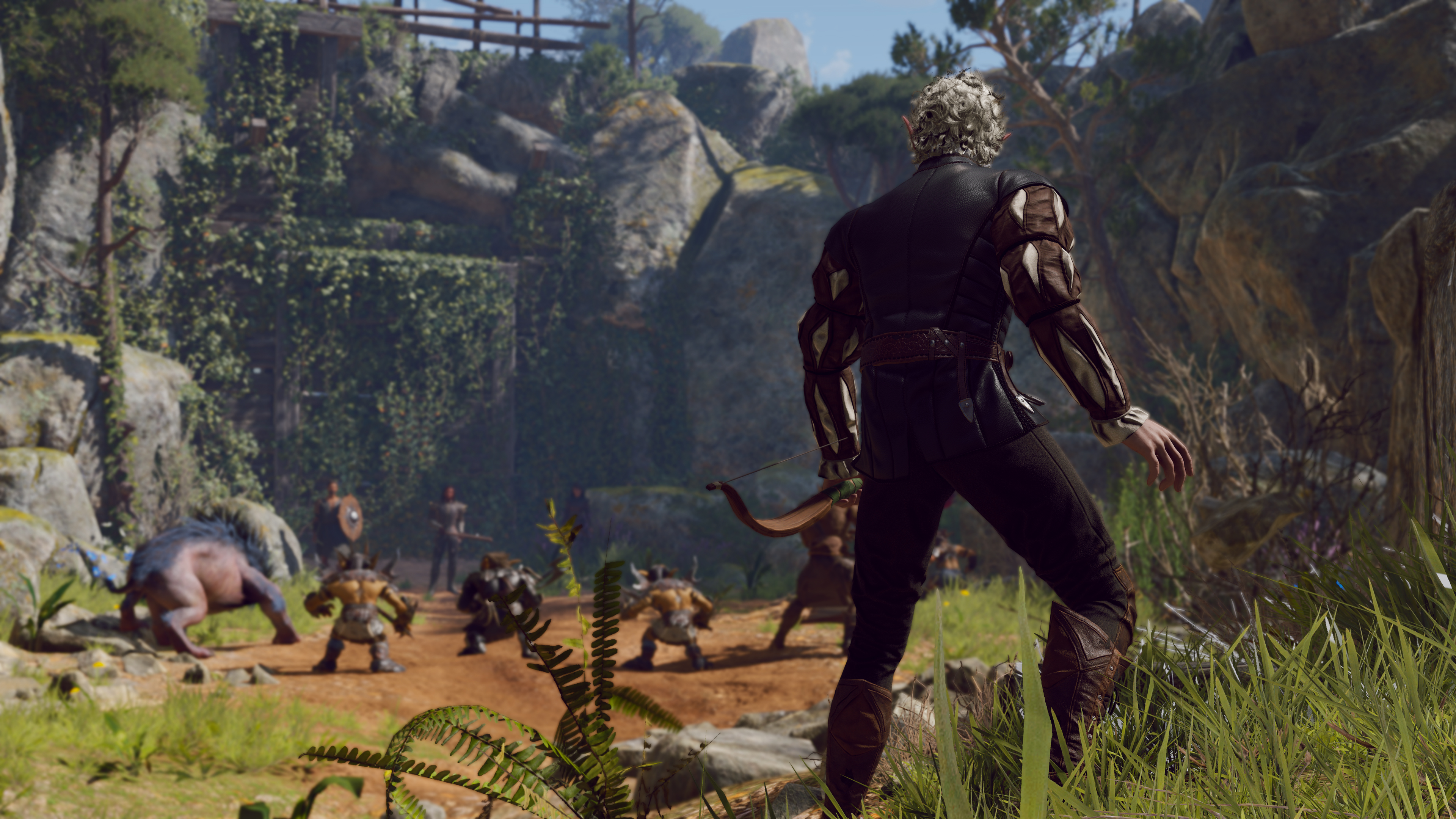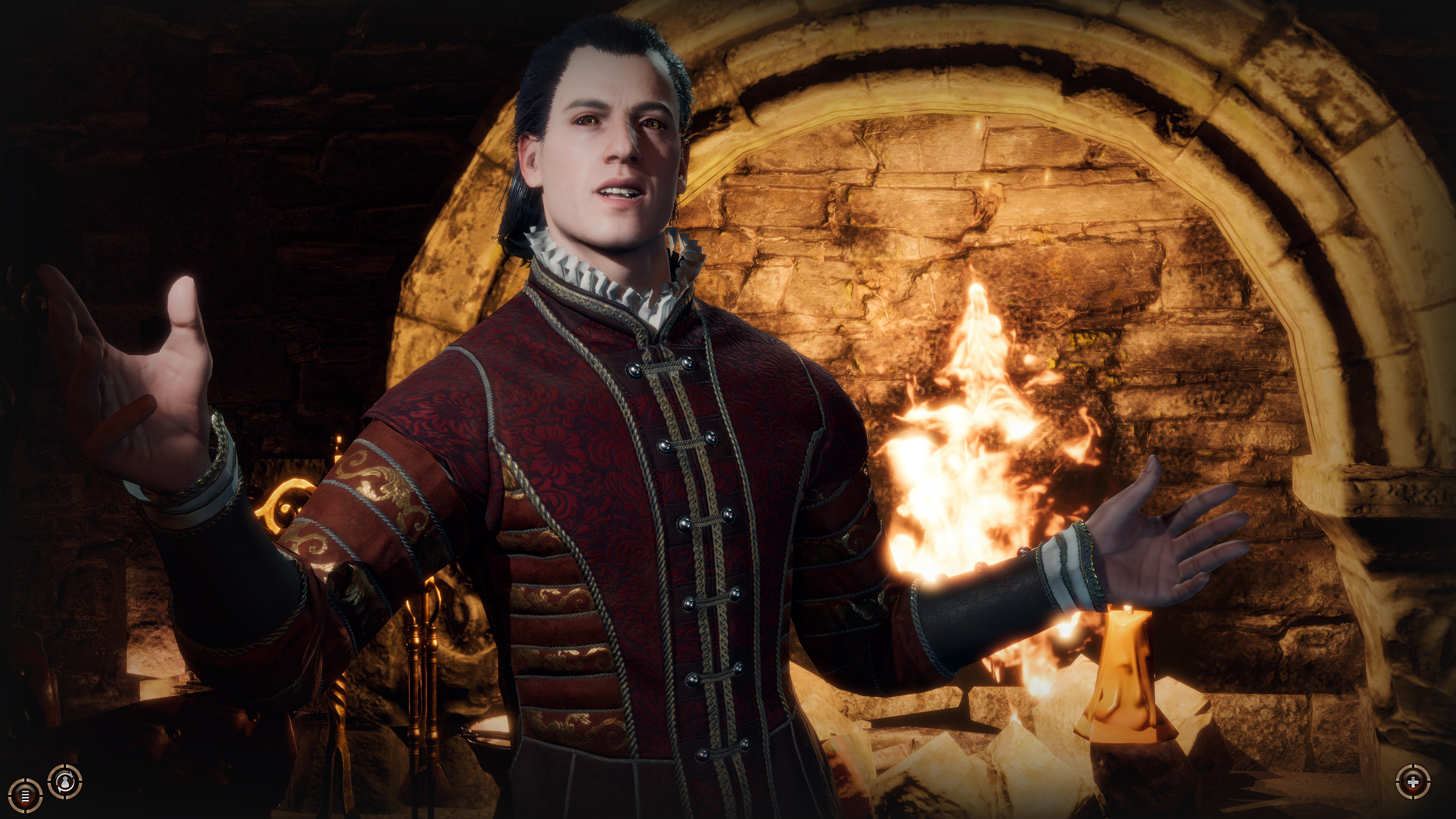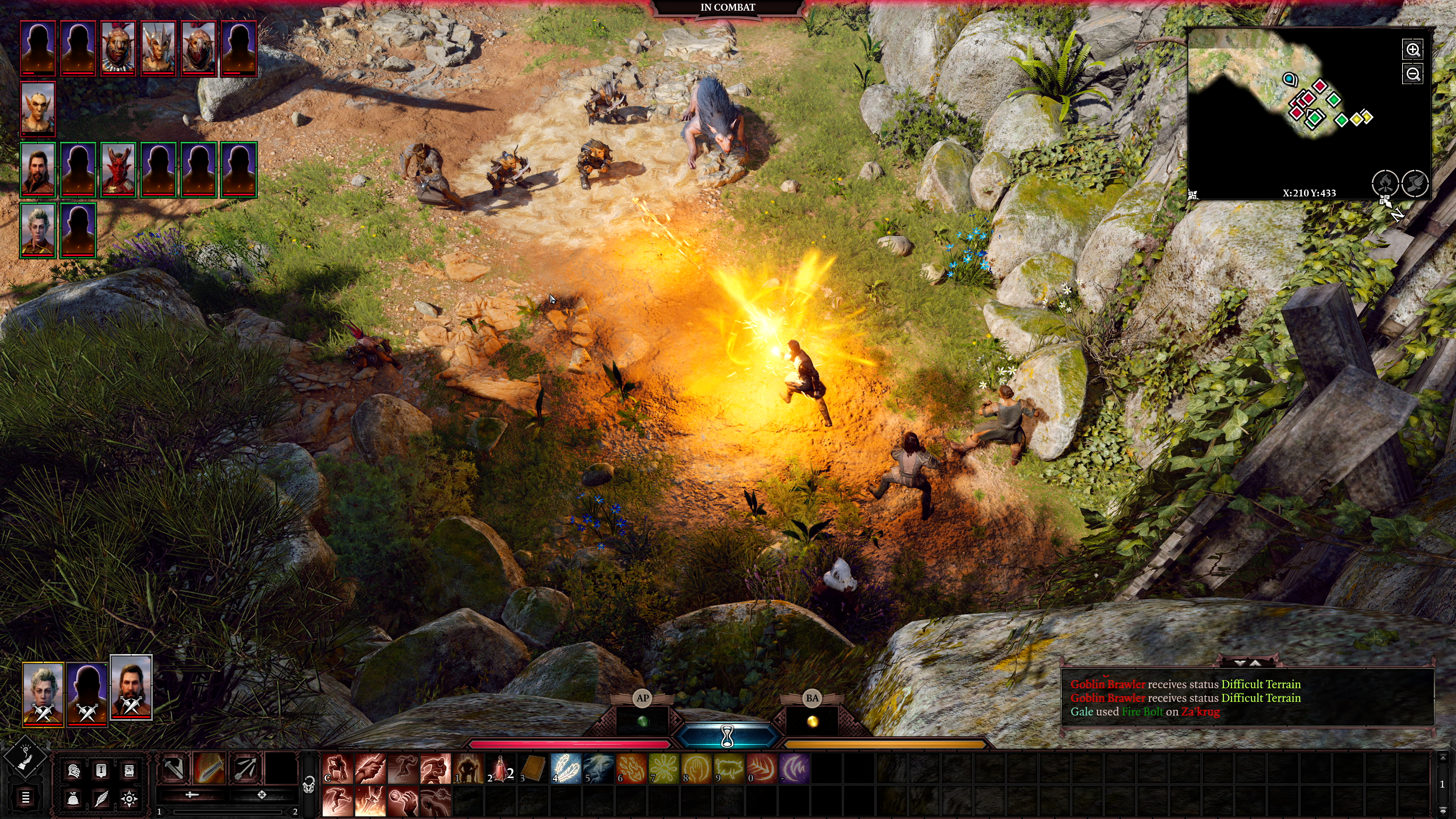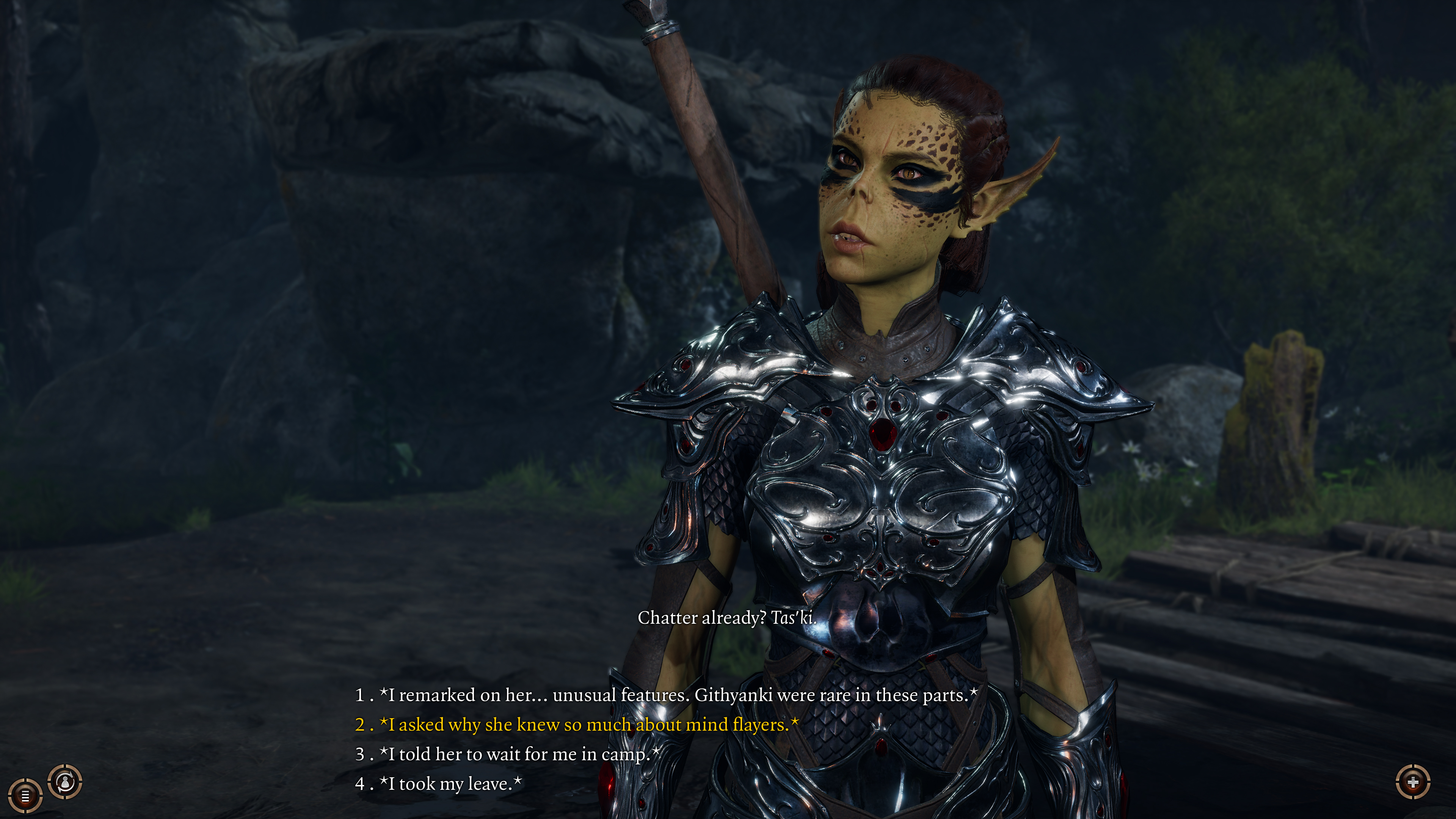Baldur’s Gate 3 shows promise — but getting started is tough
Baldur's Gate 3 is a treat for D&D fans, but tough for newbies

It’s a good thing that Baldur’s Gate III is in Early Access, because the game has a number of issues to work out. Some of them — a lot of them, in fact — are technical. Graphical oddities, gameplay glitches and unclear installation processes are all present and accounted for, but that’s par for the course in an Early Access game. What’s a little more disappointing is that Baldur’s Gate III had the opportunity to make the series more accessible than ever for D&D newbies, but hasn’t really done so yet.
I played the introductory level of Baldur’s Gate III in Early Access on a press demo account, and I was left with mixed feelings about the whole experience. On the one hand, I’m thrilled to finally see the accessible 5th Edition rules for Dungeons & Dragons in a major video game. I’m equally pumped to revisit the Baldur’s Gate series after almost 20 years away. Baldur’s Gate III has an intriguing setup, and the character creator alone could eat up hours of your time before you craft the perfect protagonist.
- Baldur’s Gate 3 release date, classes, gameplay, trailer and news
- The best PC RPGs you can play
On the other hand, I remember the novel-length instruction manuals for the first two Baldur’s Gate games, and just how much they did to keep prospective players at arm’s length. Rather than giving new players an easy on-ramp to a very complicated tabletop game, Baldur’s Gate III assumes at least a baseline familiarity with D&D before launching you right into the deep end.

Getting started
For the moment, I can evaluate only the first level of Baldur’s Gate III, even though there’s at least 15-20 hours of content available — more, if you’re interested in playing through the Early Access campaign with multiple character types. I would have liked to play more, but even just getting the game up and running isn’t that simple.
First off, the game costs $60 to play, despite the fact that the playable build is not even half-finished yet. To its credit, Larian Studios has been incredibly up-front about the current state of the game. The company has explained to players that the Early Access experience is very much for gamers who are interested in how developers create and refine games during production. Still, Early Access players are essentially doing a ton of unpaid QA work for Larian at the moment, both in terms of rooting out bugs and giving more general feedback on what works (and doesn’t) in the gameplay and story. This is the kind of thing that a free open beta would usually address. Players who pony up the cash now will eventually get a completed version of the game, though, so take this gripe for what it’s worth.
Then, there was the process of getting it installed. Almost as soon as I finished the 55 GB download, I found that there was yet another enormous update ready to go, that the developers suggested I download and install right away. All told, the game eats up more than 80 GB, and the download speeds were painfully slow, which is odd for a game on Steam. The game is not optimized well for less-powerful systems, and finding a way to run the game at 30 frames per second required its own odyssey in the video menu.
When I got to the character creation menu, that was also a time-consuming process — albeit a much more fun one. Baldur’s Gate III has one of the most impressive character creation systems I’ve seen in an PC RPG, offering dozens of playable races, character backstories, class kits, hairstyles and more. (There aren’t that many faces or voices yet, but I’m sure that more of these are on the way.) Much like creating a D&D character in the pencil-and-paper game, it’s a lot of fun to conceive of a character, then bring him or her to life. While BGIII doesn’t offer every single option from the myriad D&D rulebooks, there’s enough here to keep all but the most battle-hardened grognards happy.
At the same time, I’m a moderately experienced D&D 5e player, at best, and even I felt like I was in over my head. There are thousands of possible build combinations, and unless you want to dive in with a pre-generated character, not much information to go on. What race and class do you need if you just want to swing a sword, or cast a fireball? Which skills complement which classes — or does it matter? This is also something that I expect to become a little more user-friendly in a later build, but if you’ve never thumbed through the D&D Player’s Handbook, expect a lot of trial and error here.
Exploration, combat and more

Once I got into the actual game with a sword-and-shield Human Fighter, I had similarly split feelings. I couldn’t help but admire how faithful Baldur’s Gate III feels to a tabletop experience — even when it’s sometimes to the game’s detriment.
Baldur’s Gate III begins when your character finds him- or herself aboard an interdimensional nautilus ship controlled by the evil Mind Flayers — eldritch baddies who are pretty much what they sound like. When the ship goes down, you have an opportunity to free yourself, explore the ship and escape from the Hell dimension in which you find yourself.
The very first thing I found was a pool of dubious goop. I made a skill check — complete with a rolling twenty-sided die animation — to see if I could recognize it. I could not, and decided to drain it onto the floor, whereupon it promptly dissolved my flesh and killed me instantly. My first run in Baldur’s Gate III lasted approximately ten seconds, and I’m still torn between admiration for Larian’s commitment, and frustration for such a disproportionate punishment, so early on.
(This is the kind of thing that a good Dungeon Master would probably not do in the very first session, for the record. But Dungeon Masters also don’t offer quick-saves, so your mileage may vary.)
Making my way around the nautilus was usually as simple as clicking on where I wanted to go, but BGIII also introduces some light platforming, with the Jump ability. While I was glad to make use of my character’s Athletics skill, having to pause the game, find the jump button, target where I want to land, and un-pause is quite a process, considering you have to do it often. I wish BGIII had at least told me the keyboard shortcut for it up-front — or had advanced enough pathfinding to know when I wanted to jump over a small gap.
Combat, too, was a lot like combat in a tabletop session of D&D. After recruiting my first party member, a Githyanki fighter named Lae’zel, we encountered a group of imps: fitting foes for a first-level encounter. Unlike the first two Baldur’s Gate games, though, combat in BGIII isn’t a “real-time with pause” system. Instead of letting your characters duke it out unless you pause to issue commands, you have to manually move, attack and perform bonus actions each turn. In theory, this means that each encounter has a certain level of strategy to it; in practice, it means that every combat takes a long time, even encounters that you could just plow through with basic attacks.
I’m not far enough into the game yet to know whether I find this setup satisfying or tedious, but I do at least wish there had been an option to run combat in real-time. As it is now, I foresee a lot of encounters that boil down to walking up to an enemy, attacking, and repeating for each party member.
Baldur’s Gate 3 outlook

As mentioned above, my experience with Baldur’s Gate III is more limited than I would have liked, due to installation and optimization issues. But if nothing else, I’m intrigued to play more. There are a lot of deep D&D lore and mechanics going on under the hood, and I imagine that the game will open up with a lot of story and character customization choices as it progresses.
For the moment, though, I wouldn’t recommend the Early Access title for most players. The game is shaping up to be something special, but right now, you’ll be spending your time money on a buggy, unfinished product that doesn’t offer anything close to a complete experience. And while I admire Larian for being up-front about that, I also think Baldur’s Gate III will be a much more satisfying game once it’s done.
Sign up to get the BEST of Tom's Guide direct to your inbox.
Get instant access to breaking news, the hottest reviews, great deals and helpful tips.
Marshall Honorof is a senior editor for Tom's Guide, overseeing the site's coverage of gaming hardware and software. He comes from a science writing background, having studied paleomammalogy, biological anthropology, and the history of science and technology. After hours, you can find him practicing taekwondo or doing deep dives on classic sci-fi.

